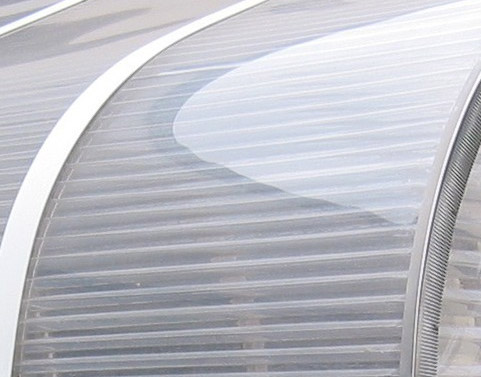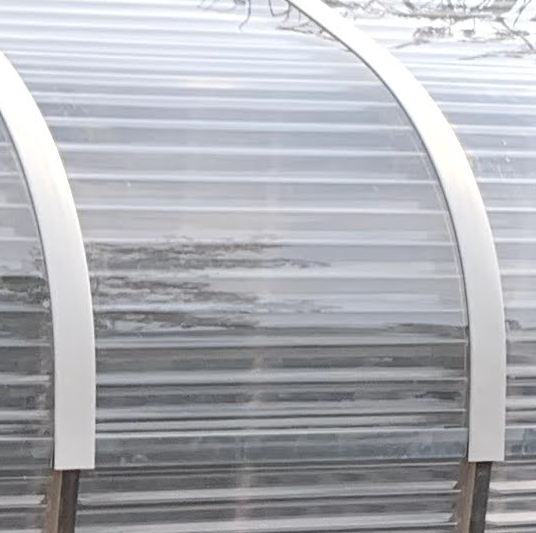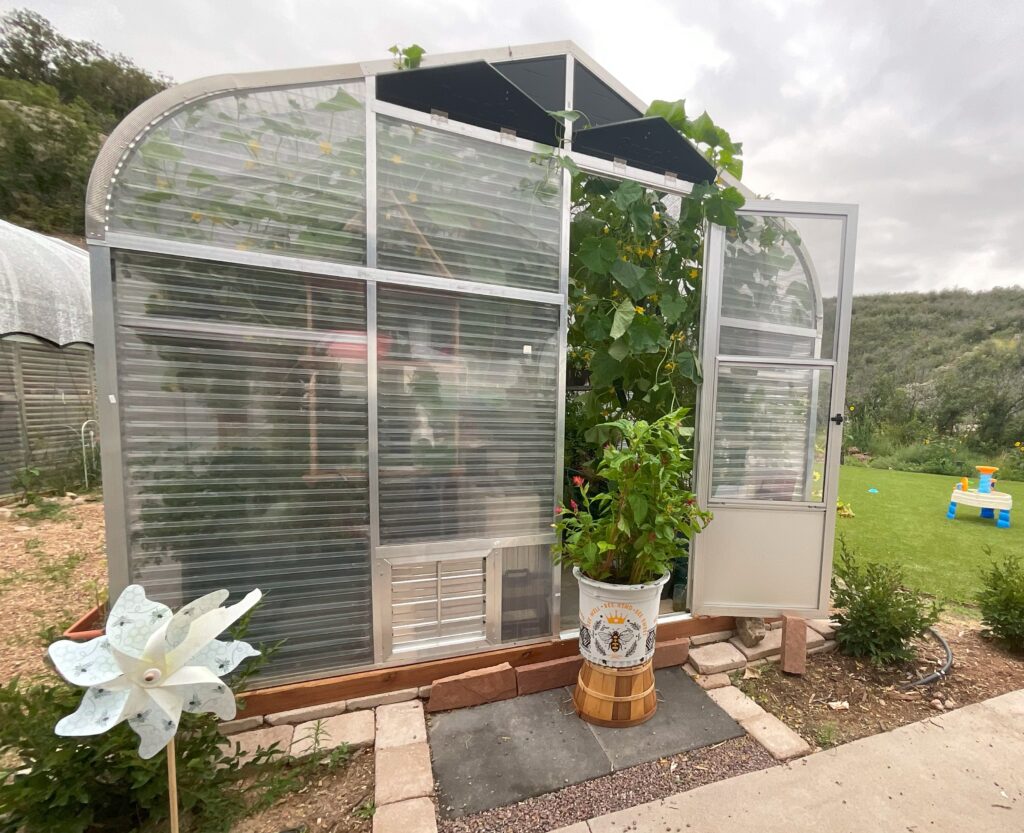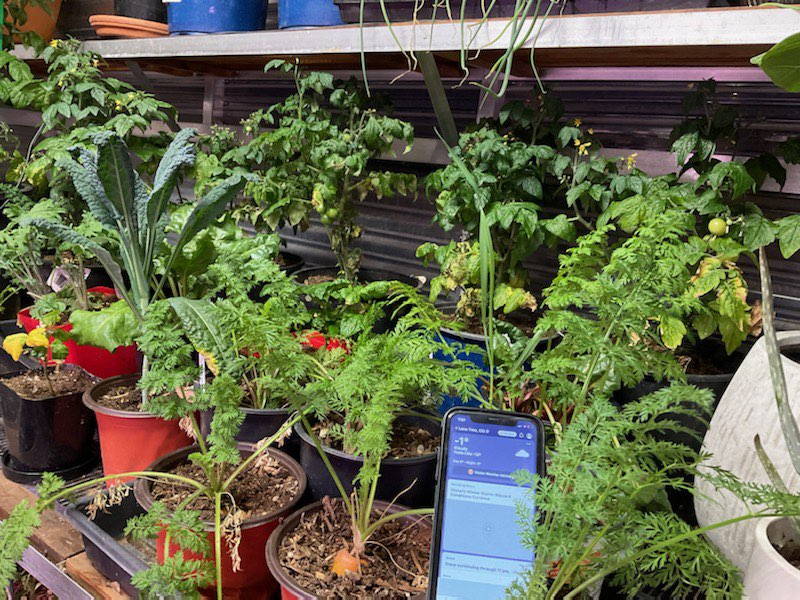Aphids -Greenhouse Pests & Prevention
If you own a greenhouse and you have plants growing inside then most likely you have aphids. Aphids are a common insect that is notorious for causing havoc inside greenhouses. They are persistent and can quickly overwhelm your space destroying your crop. Below I will discuss the aphid and present suggestions on how to control them inside your greenhouse.
Know Thy Enemy – Aphids
With all greenhouse pests, it is a good idea to understand the pest themselves, their lifecycle, and how they damage the plant. There are 30 different species of aphids and come in types of colors making them difficult to identify. These buggers are small at less than a ⅛” long soft bodied with 6 long legs, long antennae, and a pair of tubes that look like tails coming off their butts. Aphids establish colonies so are rarely just one individual. When you spot one you can assume that’s the tip of the iceberg. They are visible to the naked eye so if you are actively looking you should be able to spot them. It is always a good idea to keep a magnifying glass or hand lens in the greenhouse when looking for pests. This will give you an up-close introduction to help with identification. Aphids can be found underneath the leaves preferring new growth and along the stems. The most common types of aphids you’ll encounter inside a greenhouse are Green Peach, Melon, Foxglove, and Root aphids.
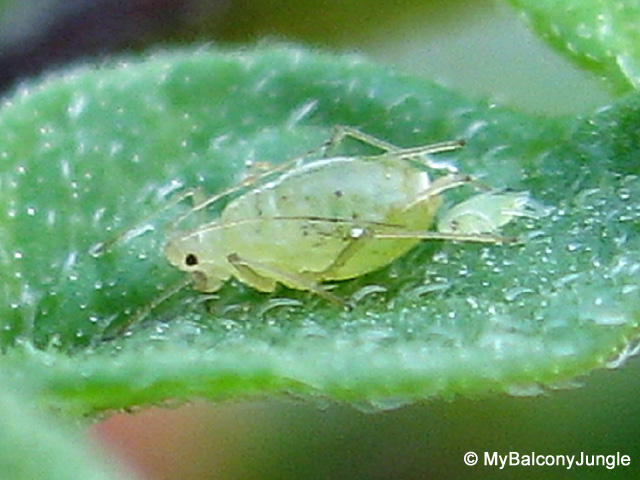
Green Peach Aphid
Aphid Life Cycle
Aphids have an interesting life cycle that ceases to amaze me. For this reason, it can be hard to ever eliminate them from your greenhouse and why they can quickly overwhelm you. Aphid eggs can lay dormant through winter then hatch in the spring when day lengths and temperatures increase. Once a female aphid hatches it reproduces asexually and ultimately gives birth to up to 100 live nymphs. Nymphs mature and start producing their offspring in less than 7 days. Think about that for a second, within two weeks that is 10,000 aphids from just one mother.
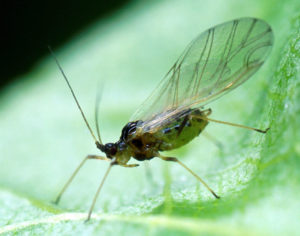
Winged Aphid
photo courtesy of CABI Digital Library
Winged Aphid
Aphids are typically wingless and they just crawl moving from plant to plant. As they grow the aphid will shed their skin, molting. However, to further their conquest and expand their territory and find new sources of food they will sometimes produce wings, winged aphids. Seriously! These winged aphids will start the reproduction process, therefore, establishing new colonies. Consequently, a winged aphid could easily fly its way into and out of your greenhouse straight to your garden.
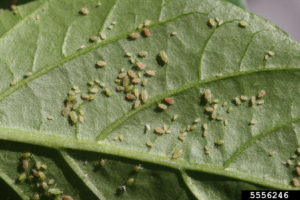
Green Peach aphids W. Crenshaw, Colorado State University Bugwood.org
How An Aphid Feeds & Visual Cues
The aphid is a piercing/sucking insect and can attack many different parts of the plant but they do prefer the softer new growth. As a result, you may notice young seedlings with deformed leaves. This is a result of aphids previously feeding and removing the plant juices thereby causing the cell structures to collapse and misshaping the leaves as the plant matures.
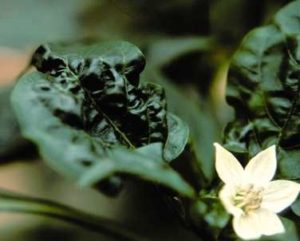
Distortion of young pepper leaves due to aphid feeding photo by Ontario Ministry of Ag
As aphids suck the sap out of the plant they have a difficult time digesting all the sugars and release a substance called honeydew. You may have seen this sticky substance on your plants. This is a telltale sign that you have actively feeding aphids inside the greenhouse. Given time this honeydew will be colonized by black sooty mold fungi. This mold is not immediately harmful to your plants but blocks the process of photosynthesis thereby weakening the plant. It is a good idea to clean the sooty mold off the leaves.
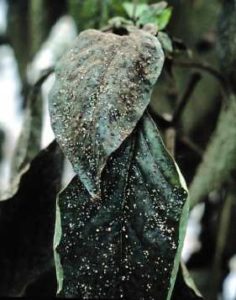
Sooty mold photo by Ontario Ministry of Ag
As I mentioned earlier aphids molt four times before becoming an adult. Subsequently, they leave behind their old skins on the surface of the plant, which look like white flakes. These skins can be found stuck on the honeydew alerting you that aphids are in the greenhouse. Ultimately a plant’s nutrients are sucked out by the aphids weakening it to the point of death. Worst of all, aphids also act as vectors of plant viruses spreading disease from plant to plant as they eat.
Prevention and Control of Aphids
Monitor & Prevention
“An ounce of prevention is worth a pound of cure” – Benjamin Franklin
I always assume there are aphids lurking in my greenhouse and it is this very paranoia that keeps me from experiencing a severe infestation. Take the time to walk the greenhouse space at least once a week and pick up plants and visibly inspect them. Direct your attention to the new growth and underneath the leaves. Start in the corners of the greenhouse and work your way through. This process is referred to as scouting.
Keep an eye out for aphid skins, sticky honeydew & black soot mold, and damage to the plants. Plant damage includes pale/yellow discoloration, leaf distortion, leaf curling, and stunted growth. I suggest you purchase and place a few yellow sticky cards at plant height inside your greenhouse. Winged aphids will get stuck on the yellow card can give you an idea of how much aphid pressure you are experiencing inside the greenhouse. If you are catching lots within a short time you will need to take action immediately.
Prevent the aphids from establishing themselves inside your greenhouse so that you do not end up with a severe infestation that is harder to control.
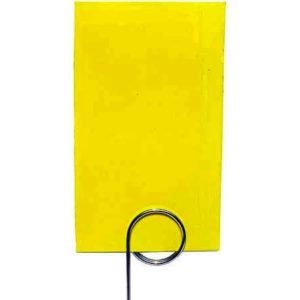
Yellow Stick Traps
Control
Thankfully there are many low-impact options available to control aphids. They all do an outstanding job as long as you have a low aphid population. Important to note, it is extremely hard to have zero pests in an actively growing greenhouse. If the aphid population reaches a critical level given its lifecycle your only recourse will be what I call the nuclear option.
There are three main categories of pesticides. Synthetic, organic/biopesticides, and inorganic. If you prefer not to use a pesticide you can purchase beneficial insects. Here are examples of beneficial insects to release in your greenhouse Lacewings, Orius insidiosus, and Aphidius colemani. You can find and read more about these options by searching suppliers online.
Through scouting, you can identify how bad the aphid problem is thereby determining a course of action. Sometimes the problem can be solved by simply removing infected plants or material from the greenhouse environment if it is isolated to a few plants. However, if the aphid population is more widespread begin a spray rotation using organic pesticides by making at least three separate applications over a period of two weeks. A hand pump sprayer is recommended with an adjustable spray pattern for safely applying pesticides. Always read and adhere to the label which will clearly state the clothing required, safety information, and if there is a Restricted Entry Interval (REI). The other critical information to be aware of is how often the pesticide can be applied and the appropriate mixing rates. If you are going to spray edibles make sure the pesticide you plan to spray is labeled for that use. I would encourage you to stick with using only organic chemicals.
Because aphids are soft-bodied most insecticides will be a contact spray. This means the pesticide must come into contact with and remain on the aphid for some amount of time to be effective. Therefore, when applying you will want to target the pest specifically and focus your spraying to reach underneath the leaves. Spray liberally so that the pesticide is dripping off the plant. Spray only in the mornings and evenings. Below is a list of my suggested organic pesticides for use against aphids.
- Neem Oil Extract Concentrated – Garden Safe
- BotaniGard ES – Certis
- Azatin-O (Azadirachtin)- OHP
- M-Pede -Gowan
Always refer to the label for information on how to appropriately use it. Remember that you will need to spray at least three applications. The label will instruct you how often you can apply. If after the third application, you are still experiencing aphid pressure inside the greenhouse you might need to resort to what I refer to as the nuclear option. The pesticides suggested below can kill both pests and beneficial/pollinators.
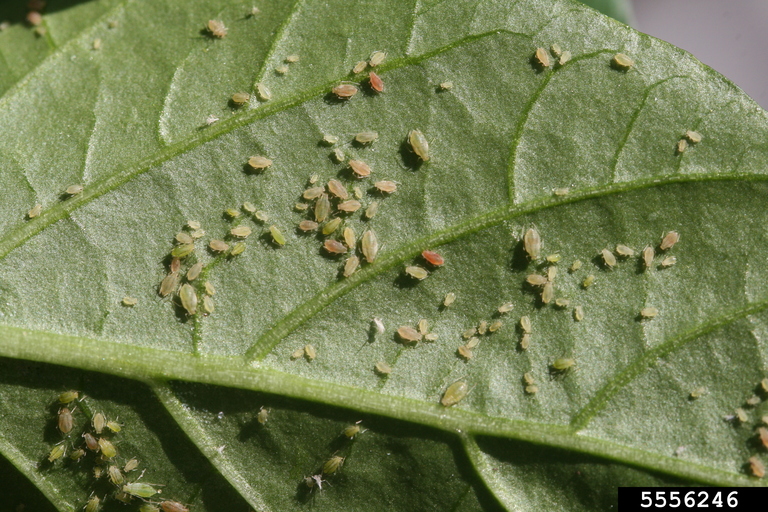
Green Peach aphids W. Crenshaw, Colorado State University Bugwood.org
Winning Strategy
Recognizing the fact that they are a common greenhouse pest. You need to assume they are always present being mindful that you don’t allow populations to flourish. The winning strategy is to control the aphids preventing severe infestations from ever happening. Continuing to be vigilant and inspecting your plants will go a long way toward that goal. Immediately take action once you discover signs of aphids. You may want to consider applying one of the recommended insecticides at the very least monthly or periodically releasing beneficial insects into the greenhouse regardless of pest pressure.

















